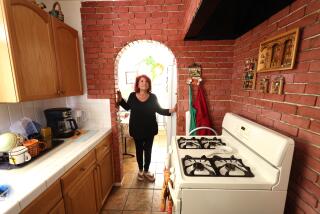Two Is Company On the Orange Freeway
- Share via
Recently, the Orange County Transportation Authority made the right call for the wrong reason on its portion of the Riverside Freeway. Then it took aim at the Orange Freeway, where it appears intent on making the mistake it avoided earlier. At issue is whether carpool lanes continue to encourage people to share rides or whether they essentially become speedy pathways for the affluent.
OCTA eventually scrapped a plan to charge some cars while giving others free access along a 10-mile stretch of the Riverside Freeway. The plan would have allowed cars with three or more occupants to ride free, while charging others on a so-called high-occupancy toll lane (HOT).
So far so good. However, the decision to allow the new lane on the Riverside Freeway to become what it ought to be, a regular carpool lane, was made with resignation. The board jettisoned the plan apparently because it was not possible to get all the required approvals and also install toll-collection equipment by late 1999, when the new lane is scheduled to open.
The board then went ahead and voted to shift the focus to the Orange Freeway, where a new lane already has been approved but isn’t as far along, thus allowing more time to work out the details. To say the least, this is not such a HOT idea.
OCTA ought to use its planning time to reconsider the change. It is tempting, no doubt, with the projected ability of toll lanes to bring in as much as $30 million for the first five years. This is at a time when the price of road construction has gone up and gas taxes have gone down. But before too many dancing dollars cloud the thinking of bureaucrats, it is important to remember whom these public roads are for. And who has paid for them. The taxpayers.
For those who can’t pay again to ride, it is far easier to assemble two people in a car than three. Having people pay in carpool lanes, which should be free, would effectively create two classes of citizens.
OCTA, in its successful and expensive effort to improve the county’s freeway system, has put a premium on creativity. Inspired by $3.1 billion in improvements made possible by a 1990 half-cent sales tax measure, the county has come up with an attractive package of wider freeways, carpool lanes, super-streets and bus and railway plans. But creativity in paying for roads that already tap taxpayer funds has its limits.
More to Read
Sign up for Essential California
The most important California stories and recommendations in your inbox every morning.
You may occasionally receive promotional content from the Los Angeles Times.










